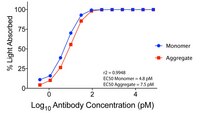MABN2402-100UG Sigma-AldrichAnti-Tau Antibody, clone 10C5
This mouse monoclonal Anti-Tau, clone 10C5, Cat. No. MABN2402 is tested for use in Western Blotting, Immunohistochemistry, and ELISA, for the detection of Tau.
More>> This mouse monoclonal Anti-Tau, clone 10C5, Cat. No. MABN2402 is tested for use in Western Blotting, Immunohistochemistry, and ELISA, for the detection of Tau. Less<<Produits recommandés
Aperçu
| Replacement Information |
|---|
| References |
|---|
| Product Information | |
|---|---|
| Format | Purified |
| Presentation | Purified mouse monoclonal antibody IgG2b in buffer containing 0.1 M Tris-Glycine (pH 7.4), 150 mM NaCl with 0.05% sodium azide. |
| Quality Level | MQ200 |
| Physicochemical Information |
|---|
| Dimensions |
|---|
| Materials Information |
|---|
| Toxicological Information |
|---|
| Safety Information according to GHS |
|---|
| Safety Information |
|---|
| Storage and Shipping Information | |
|---|---|
| Storage Conditions | Recommended storage: +2°C to +8°C. |
| Packaging Information | |
|---|---|
| Material Size | 100 μg |
| Transport Information |
|---|
| Supplemental Information |
|---|
| Specifications |
|---|
| Global Trade Item Number | |
|---|---|
| Référence | GTIN |
| MABN2402-100UG | 04065271175082 |
Documentation
Anti-Tau Antibody, clone 10C5 FDS
| Titre |
|---|
Anti-Tau Antibody, clone 10C5 Certificats d'analyse
| Titre | Numéro de lot |
|---|---|
| Anti-Tau, clone 10C5 - Q4138317 | Q4138317 |










